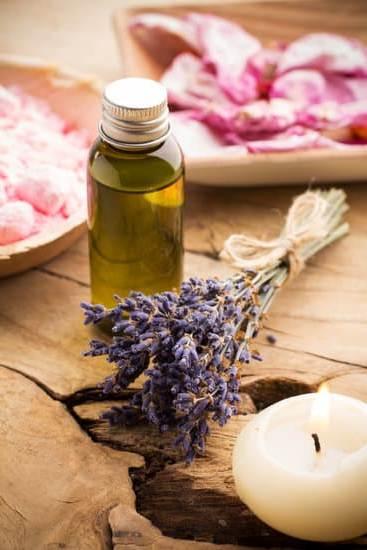Aromatherapy soap is a delightful and beneficial addition to any skincare routine. This article will guide you through the process of making your very own aromatherapy soap, allowing you to personalize it with your favorite scents and therapeutic properties. By incorporating essential oils into your soap, you can transform your daily shower or bath into a rejuvenating and aromatic experience.
Using aromatherapy soap comes with numerous advantages for both the body and mind. The essential oils used in these soaps have been known to have various therapeutic properties that can uplift mood, relax the body, soothe skin irritations, and promote a sense of overall well-being. With each shower or bath, you can indulge in the soothing scents while reaping the benefits of aromatherapy.
Before diving into the soap-making process, it is important to understand the basic ingredients needed for aromatherapy soap. Essential oils are at the heart of this type of soap, providing not only their pleasant scents but also their unique therapeutic properties.
Carrier oils serve as the base for the soap and help dilute the essential oils to ensure safe usage on skin. Other ingredients such as lye, water, and additional additives like botanicals or exfoliants may be utilized as well.
In this comprehensive article, we will walk you through each step of making aromatherapy soap – from selecting the base to adding essential oils and decorative elements – ensuring that even beginners can successfully create their own personalized soaps. So get ready to explore different scents, learn about various essential oil options, and discover the joys of crafting your own handmade aromatherapy soap.
Benefits of using aromatherapy soap
Aromatherapy soap offers numerous benefits for both the skin and the mind. By incorporating the principles of aromatherapy into your daily skincare routine, you can enhance not only the health and appearance of your skin but also improve your overall well-being.
One major benefit of using aromatherapy soap is its ability to moisturize and nourish the skin. Most commercially available soaps often contain harsh chemicals that can strip away the natural oils from your skin, leaving it dry and dehydrated.
Aromatherapy soaps, on the other hand, are typically made with all-natural ingredients such as essential oils and carrier oils that provide deep hydration without any harmful additives. The emollient properties of these oils help to lock in moisture, keeping your skin soft and supple throughout the day.
In addition to its moisturizing effects, aromatherapy soap can also offer therapeutic benefits for various skin conditions. Certain essential oils have antibacterial, anti-inflammatory, and antioxidant properties that can help alleviate acne symptoms, soothe irritated or inflamed skin, and promote a healthy complexion. For example, tea tree oil is known for its antimicrobial properties and can be beneficial for individuals with acne-prone skin.
Lavender oil has calming properties that can help reduce redness and irritation associated with sensitive skin. By choosing the right essential oils for your specific skincare concerns, you can address these issues while enjoying a luxurious bathing experience.
Benefits of Aromatherapy Soap
- Deeply moisturizes and nourishes the skin
- Offers therapeutic benefits for various skin conditions
- Promotes relaxation and reduces stress
- Enhances mood and uplifts spirits
- Adds a luxurious touch to daily skincare routine
It is important to note that while aromatherapy soap can offer numerous benefits, individual results may vary. It is always recommended to perform a patch test before using a new soap or essential oil to ensure that you have no allergic reactions or sensitivities.
Additionally, consulting with a qualified aromatherapist or dermatologist can help you determine the best essential oils and ingredients for your specific skin type and concerns. By incorporating aromatherapy soap into your daily skincare routine, you can enjoy the natural goodness of botanicals while pampering your skin and indulging in self-care.
Understanding the basic ingredients
Understanding the basic ingredients is essential when it comes to making aromatherapy soap. In order to create a truly therapeutic and fragrant soap, it’s important to have a good grasp on the different types of essential oils, carrier oils, and other ingredients that are commonly used in this craft.
Essential oils are the heart and soul of aromatherapy soap. They are highly concentrated plant extracts that offer various therapeutic properties. Each essential oil has its own unique scent and benefits for the skin and mind.
Some popular essential oils used in aromatherapy soap include lavender for relaxation, peppermint for invigoration, and tea tree for its antibacterial properties. It’s important to research each essential oil before using it in your soap to ensure you understand its specific properties and potential effects.
Carrier oils play a crucial role in making aromatherapy soap as they dilute the essential oils and provide nourishment to the skin. Common carrier oils include olive oil, coconut oil, almond oil, and jojoba oil. These oils not only help to moisturize the skin but also act as a base for blending essential oils. It’s recommended to choose high-quality carrier oils that are cold-pressed or expeller-pressed to ensure their purity.
Aside from essential and carrier oils, there are other ingredients necessary for creating aromatherapy soap. One such ingredient is lye, also known as sodium hydroxide, which is an alkaline chemical used in the saponification process that turns fats into soap. However, it’s important to handle lye with extreme caution because it can be dangerous if not used properly. Safety goggles, gloves, and long-sleeved clothing should always be worn when working with lye.
Safety precautions
Safety precautions are of utmost importance when working with essential oils in the process of making aromatherapy soap. While essential oils offer numerous benefits, it is crucial to handle them carefully to ensure personal safety and optimize their therapeutic properties. Here are some important safety guidelines to follow:
- Dilute Essential Oils Properly: Essential oils are highly concentrated, so they should always be diluted before use in soapmaking. This helps prevent skin irritation or sensitization. It is recommended to consult a reputable reference guide or a certified aromatherapist for proper dilution ratios.
- Protective Measures: When handling essential oils, it is essential to protect yourself by wearing gloves and goggles. Some oils can cause skin irritation or sensitization, and accidental contact with eyes may cause severe discomfort or injury.
- Proper Storage: Essential oils should be stored in dark glass bottles tightly sealed with caps or droppers to prevent oxidation and preserve their potency. It is advised to store them in a cool, dry place away from direct sunlight and out of reach of children and pets.
- Patch Testing: Before using any essential oil on your skin, conduct a patch test by applying a small amount of the diluted oil to your inner forearm or wrist and monitoring for any adverse reactions like redness or itching. If any discomfort occurs, refrain from using that particular oil.
- Avoid Sun Exposure: Certain essential oils, such as citrus oils like lemon or bergamot, can make your skin photosensitive and more susceptible to sunburns or discoloration when exposed to sunlight after application. It is advisable not to apply these oils before prolonged sun exposure.
By following these safety precautions, you can enjoy the benefits of aromatherapy without compromising your well-being. The proper handling and storage of essential oils will ensure not only their longevity but also your peace of mind while making aromatherapy soap at home.
Step-by-step guide on making aromatherapy soap
Making your own aromatherapy soap can be a fun and rewarding experience. Not only do you get to personalize the scents and ingredients, but you also have the satisfaction of creating something that is beneficial for your skin and overall well-being. In this section, we will guide you through the step-by-step process of making your own aromatherapy soap.
Choosing the base
The first step in making aromatherapy soap is selecting a suitable base. The most common bases for handmade soap are melt-and-pour soap bases, which are readily available at craft stores or online. These bases are pre-made, glycerin-based soaps that simply require melting and adding your chosen ingredients.
When choosing a melt-and-pour soap base, consider factors such as its transparency, texture, and lathering properties. Some popular options include clear glycerin soap base, goat milk soap base, honey soap base, and shea butter soap base. Each has its unique properties and benefits for different skin types.
Addition of essential oils
Once you have chosen your base, it’s time to add essential oils to create your desired fragrances and therapeutic benefits. Essential oils are highly concentrated plant extracts known for their aromatic qualities and various healing properties.
Start by researching different essential oils and their therapeutic effects on the mind and body. For relaxation, lavender or chamomile essential oil may be a good choice. To uplift your mood or provide an energy boost, consider citrus oils like lemon or sweet orange.
Remember to be mindful of the recommended dilution rates when adding essential oils to your soap base. Generally, 1-2% of the total weight of the melted soap base is a safe guideline for most essential oils.
Adding decorations
To enhance the visual appeal of your aromatherapy soap, you can add decorative elements such as dried flowers or herbs, oatmeal, coffee grounds, or even colorful soap shavings. These decorations not only make your soap look pretty but can also provide additional exfoliating or soothing properties.
Before incorporating any decorations into your soap mixture, ensure they are finely ground or small enough to avoid clogging drains or causing discomfort when using the soap. It’s also important to distribute the decorations evenly throughout the soap base for a consistent appearance.
With these steps in mind, you are now ready to begin making your own personalized aromatherapy soaps. Remember to always follow safety precautions and take proper storage and curing measures to ensure the longevity and effectiveness of your handmade creations.
Choosing the right essential oils
Understanding the basics of essential oils
Before diving into the different essential oils and their properties, it’s important to understand the basics of essential oils. Essential oils are concentrated plant extracts that capture the natural fragrance and beneficial properties of plants. They have been used for centuries in various cultures for their therapeutic benefits. When choosing essential oils for your aromatherapy soap, it’s crucial to ensure that you are using pure, high-quality oils.
Essential oils for various skin types
Different essential oils have different properties that can benefit specific skin types. For those with dry or mature skin, essential oils such as rose, lavender, and sandalwood can provide hydrating and rejuvenating effects. On the other hand, individuals with oily or acne-prone skin may find tea tree oil, eucalyptus oil, or lemon oil helpful in regulating sebum production and reducing blemishes.
It’s important to note that some essential oils may cause irritations or sensitivities in certain individuals. It is recommended to perform a patch test before incorporating any new essential oil into your soap and discontinue use if any adverse reactions occur.
Creating desired moods with essential oils
Aromatherapy is not only beneficial for skincare but also has a profound impact on our emotions and mood. Different scents can evoke different feelings and enhance our overall well-being. For instance, lavender essential oil is known for its calming properties which can help relieve stress and promote relaxation. Citrusy scents like lemon or orange can uplift mood and provide a refreshing effect.
When deciding on the right essential oils for your aromatherapy soap, consider the mood or atmosphere you wish to create during your bathing routine. Experimentation is key when it comes to blending different essential oils together to create unique scent combinations that resonate with your personal preferences.
By exploring different essential oils and understanding their therapeutic properties, you can create customized aromatherapy soaps that not only benefit your skin but also enhance your mood and overall well-being. Remember to always research and properly dilute essential oils before use, and have fun experimenting with different combinations to find the perfect scent for your soap.
Tips for customization
In order to personalize your aromatherapy soap and make it truly unique, there are several tips and techniques you can follow. By adding colors, scents, and textures, you can create a soap that not only provides therapeutic benefits but also appeals to your senses. Here are some guidance on how to customize your soap:
- Colors: Adding colors to your soap can enhance its visual appeal and make it more aesthetically pleasing. There are various options for coloring your soap, including natural colorants such as clays, herbs, and botanical powders, as well as synthetic colorants specifically made for soapmaking.
When choosing colors, consider the mood or theme you want to convey with your soap. For example, calming blues or greens can be used for relaxation soaps, while vibrant yellows or oranges can be used for energizing soaps. - Scents: The choice of essential oils for scenting your aromatherapy soap is an important aspect of customization. Different essential oils have different therapeutic properties and aromas that can evoke specific moods or help with various skin conditions. For example, lavender essential oil is known for its calming properties and is commonly used in soaps intended for promoting relaxation and relieving stress. Citrus essential oils like sweet orange or lemon are refreshing and uplifting.
- Textures: Texture plays a key role in the overall sensory experience when using a bar of soap. You can experiment with different textures by adding exfoliants such as ground coffee, oatmeal, or poppy seeds to provide gentle scrubbing action and remove dead skin cells.
Another way to add texture is by incorporating ingredients like dried flowers or botanicals into the soap batter before pouring it into molds. These additions not only provide visual interest but also give a unique touch to your handmade soap.
By customizing your aromatherapy soap with colors, scents, and textures, you can create a luxurious bathing experience that suits your preferences and needs. Remember to carefully measure and test any additives you use to ensure they are safe for the skin and won’t affect the soap’s performance. Experimentation is key, so don’t be afraid to try out different combinations until you find the perfect personalized soap recipe for you.
| Customization TIp | Recommendation |
|---|---|
| Colors | Use natural colorants such as clays, herbs, and botanical powders for a more organic look. Consider the mood or theme of your soap when choosing colors. |
| Scents | Select essential oils based on their therapeutic properties and desired mood. Lavender essential oil promotes relaxation while citrus oils provide an uplifting effect. |
| Textures | Add exfoliants like ground coffee or oatmeal for gentle scrubbing action. Incorporate dried flowers or botanicals into the soap batter for visual interest and unique touch. |
Curing and storing the soap
After creating your homemade aromatherapy soap, it is important to properly cure and store it to ensure its longevity and effectiveness. Curing is the process of allowing the soap to harden and dry completely before use. This step is crucial as it helps remove excess moisture from the soap, resulting in a longer-lasting bar that produces a richer lather. Additionally, proper storage will help maintain the fragrance and therapeutic properties of the essential oils used.
To cure your handmade aromatherapy soap, follow these steps:
- Find a suitable location: Choose a well-ventilated area away from direct sunlight for curing your soap. A cool, dry place like a climate-controlled room or cupboard works best.
- Allow for air circulation: Place your soap bars on a rack or tray that allows air to circulate around them freely. This ensures even drying and prevents mold or bacterial growth.
- Patience is key: Depending on the recipe, curing can take anywhere from 4-6 weeks. During this time, avoid using the soap as premature use may result in a mushy bar that disintegrates quickly.
While waiting for your soap to cure, it’s important to store it properly to maintain its quality:
- Wrap each bar individually: Once fully cured, wrap each bar of aromatherapy soap in wax paper or plastic wrap to protect it from moisture in the environment.
- Store in a cool, dry place: Keep your wrapped soaps in a clean container or drawer away from humidity, heat sources, and strong odors that could penetrate the bars.
Following these curing and storing techniques will ensure that your handmade aromatherapy soaps stay fresh and effective for months to come.
| Curing Tips | Storing Tips |
|---|---|
| Find a suitable location away from direct sunlight | Wrap each bar individually in wax paper or plastic wrap |
| Allow for air circulation to prevent mold | Store in a cool, dry place away from humidity, heat sources, and strong odors |
| Be patient – curing can take 4-6 weeks | Keep wrapped soaps in a clean container or drawer |
Additional ideas and variations
The world of aromatherapy soap is filled with endless opportunities for creative experimentation. Once you have mastered the basics of making your own soap, it’s time to dive into the realm of additional ideas and variations. This section will provide advanced soapmaking enthusiasts with inspiration on how to create unique and personalized soaps using different ingredients, shapes, and designs.
One way to add a twist to your aromatherapy soap is by incorporating natural exfoliants. Exfoliation is a crucial step in any skincare routine as it helps remove dead skin cells and reveal smoother, healthier-looking skin. You can use ingredients like coffee grounds, oatmeal, or dried flower petals for gentle exfoliation. Not only will these additives enhance the texture of your soap, but they can also bring added benefits such as soothing inflammation or providing antioxidant properties.
Another way to customize your soap is by experimenting with different shapes and sizes. Traditional rectangular bars are classic and easy to handle, but why not think outside the box? Consider using silicone molds in various shapes such as hearts, stars, flowers, or even novelty shapes like animals or fruits. These unique shapes not only make for eye-catching gifts or decorative pieces in your bathroom but also add a touch of fun to your daily bathing experience.
Lastly, don’t forget about the power of colors and visual appeal when creating your personalized aromatherapy soaps. Adding natural colorants such as clays, powdered herbs, or fruit/vegetable purees can give your soap a vibrant hue without resorting to artificial dyes. You can also play with marbling techniques by swirling different colors together for a visually stunning effect. Remember that aesthetics play a significant role in creating an enjoyable sensory experience during bath time.
Conclusion
In conclusion, aromatherapy soap is a wonderful addition to any skincare routine. The benefits of using aromatherapy soap are numerous, including improved mood, relaxation, and nourishment for the skin. By incorporating essential oils into your daily cleansing ritual, you can experience the holistic benefits of aromatherapy and create a personalized sensory experience.
Understanding the basic ingredients necessary to make aromatherapy soap is crucial. Essential oils provide the aromatic properties and therapeutic benefits, while carrier oils act as a base that moisturizes and nourishes the skin. Along with these ingredients, you can add other elements such as exfoliants or decorative items to enhance the aesthetic appeal of your soap.
Safety precautions should always be taken when working with essential oils. These concentrated substances are potent and require careful handling. Proper storage is also important for maintaining their quality and effectiveness. By following these safety guidelines, you can ensure a positive and safe experience while creating your own personalized soaps.
By following our step-by-step guide, you can easily make your own aromatherapy soap at home. From choosing the base to adding essential oils and decorations, this process allows you to unleash your creativity and customize your soap according to your needs and preferences.
Remember that making aromatherapy soap is not only about creating a product but also about embracing self-care and wellness. By experimenting with different essential oils, colors, scents, textures, shapes, and designs, you can personalize each bar of soap to cater to your specific desires.
So why not give it a try? Making your own aromatherapy soap allows you to combine the benefits of skincare with the power of scent therapy in one beautiful package. Take control over what goes on your body by creating handmade soaps that elevate both your physical well-being and mental state. Start exploring this rewarding craft today.
Frequently Asked Questions
How do you make aromatherapy liquid soap?
Making aromatherapy liquid soap involves a few simple steps. First, gather the necessary ingredients, which typically include liquid castile soap, carrier oils, essential oils of your choice, and optional additives like aloe vera gel or vitamin E oil. Next, mix together the desired amount of liquid castile soap with a carrier oil such as almond or coconut oil.
This mixture will serve as the base for your soap. Finally, add several drops of your preferred essential oils to the mixture for fragrance and therapeutic benefits. Stir well to combine all the ingredients thoroughly and transfer the final product into a suitable container for use.
Can aromatherapy essential oils be used in soap making?
Yes, aromatherapy essential oils can definitely be used in soap making. In fact, they are commonly used to add fragrance and therapeutic properties to homemade soaps.
Essential oils are derived from plants and contain concentrated aromatic compounds that retain their natural scent and potential health benefits when added to soap recipes. However, it is important to ensure that you are using high-quality, pure essential oils that are safe for topical application and have been properly diluted before adding them to your soap.
What is the best essential oil for soap making?
Determining the best essential oil for soap making largely depends on personal preference and desired effects. However, some popular choices among soap makers include lavender essential oil for its calming properties and soothing scent, tea tree essential oil for its antibacterial qualities, peppermint essential oil for its invigorating aroma and cooling sensation on the skin, and citrus oils such as lemon or sweet orange for their uplifting fragrances.
Ultimately, it is important to consider factors such as safety guidelines provided by reliable sources and the specific purpose or mood you want your soap to convey when choosing the best essential oil for your soap recipe.

Are you looking for a natural way to improve your health and wellbeing?
If so, aromatherapy may be the answer for you.





